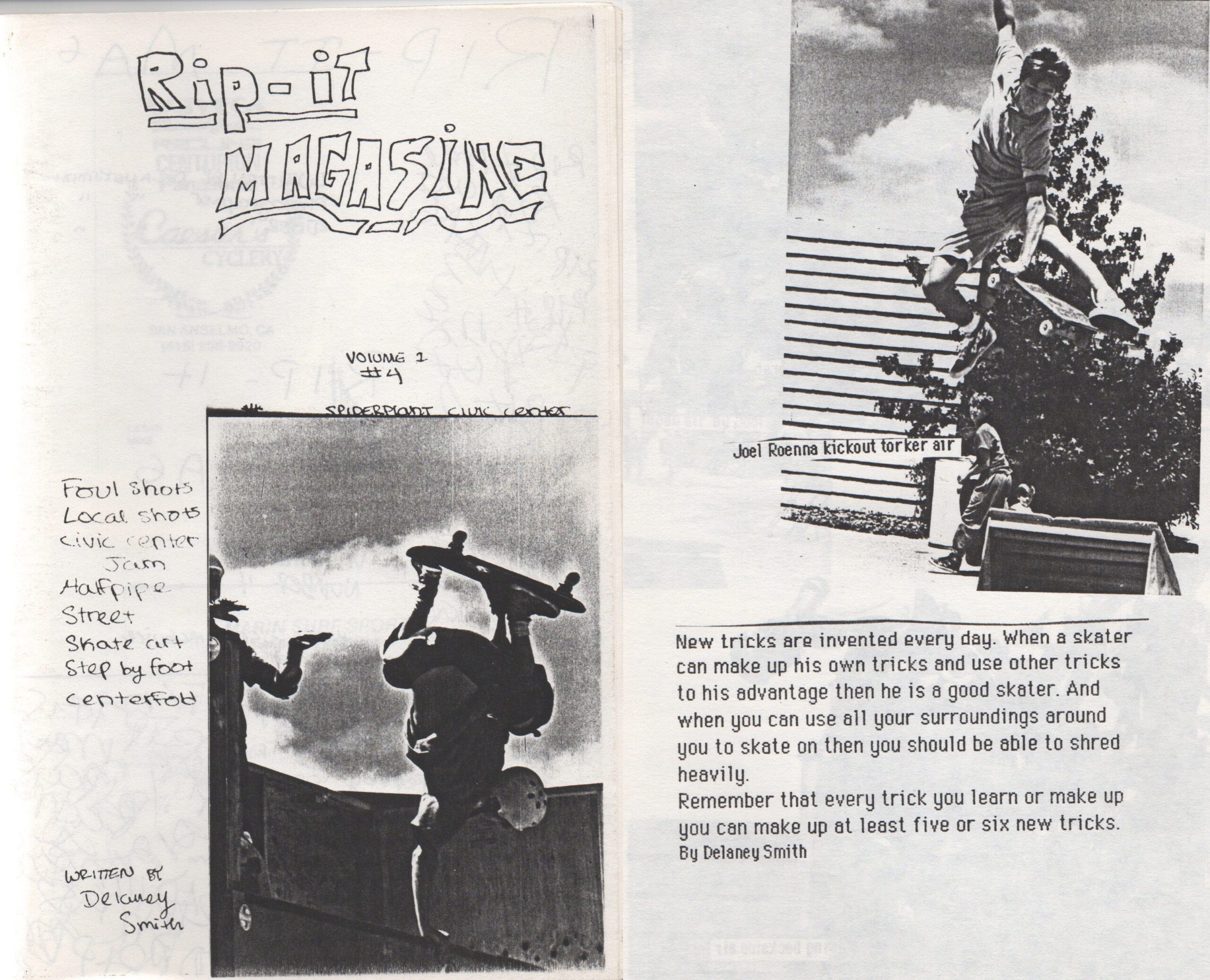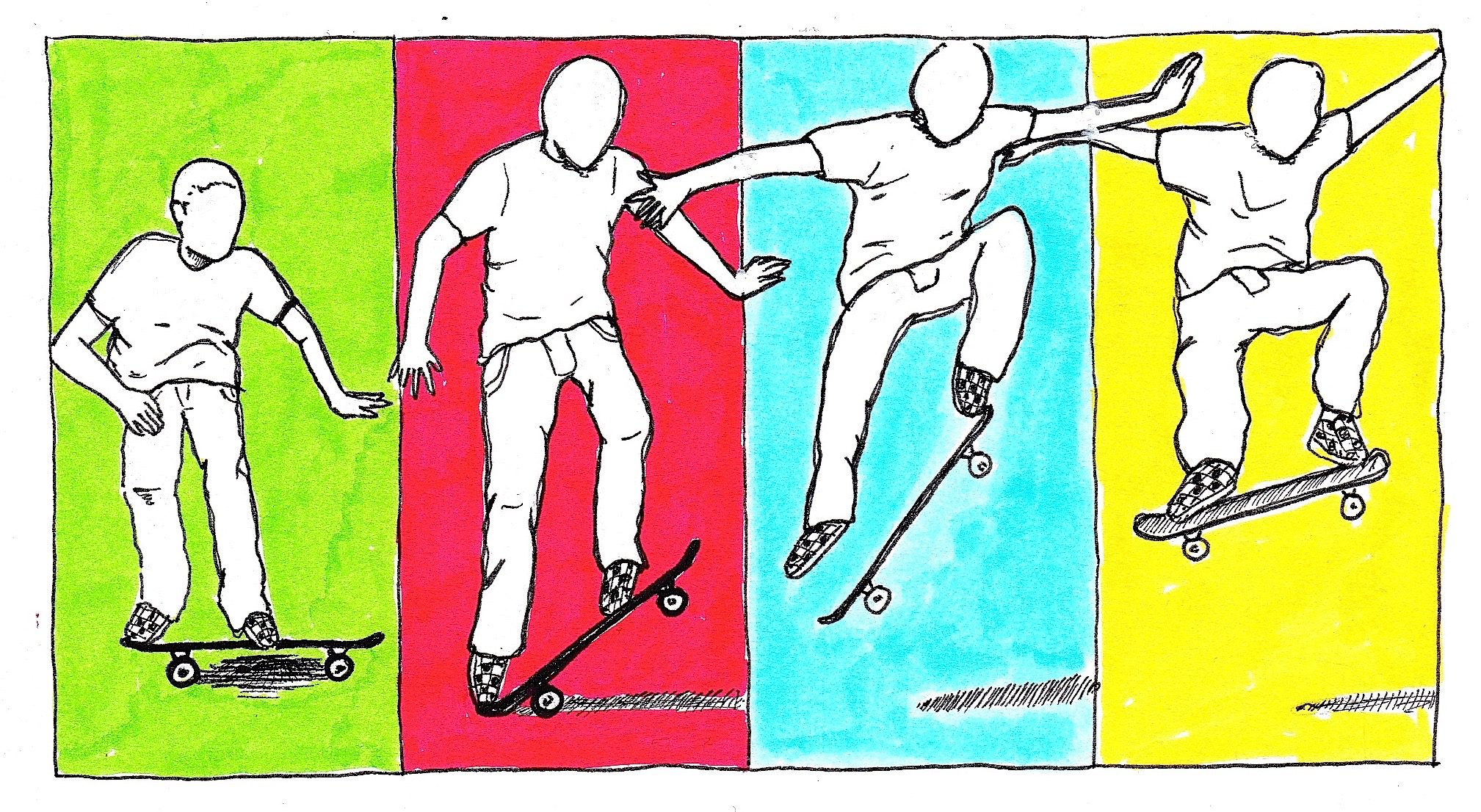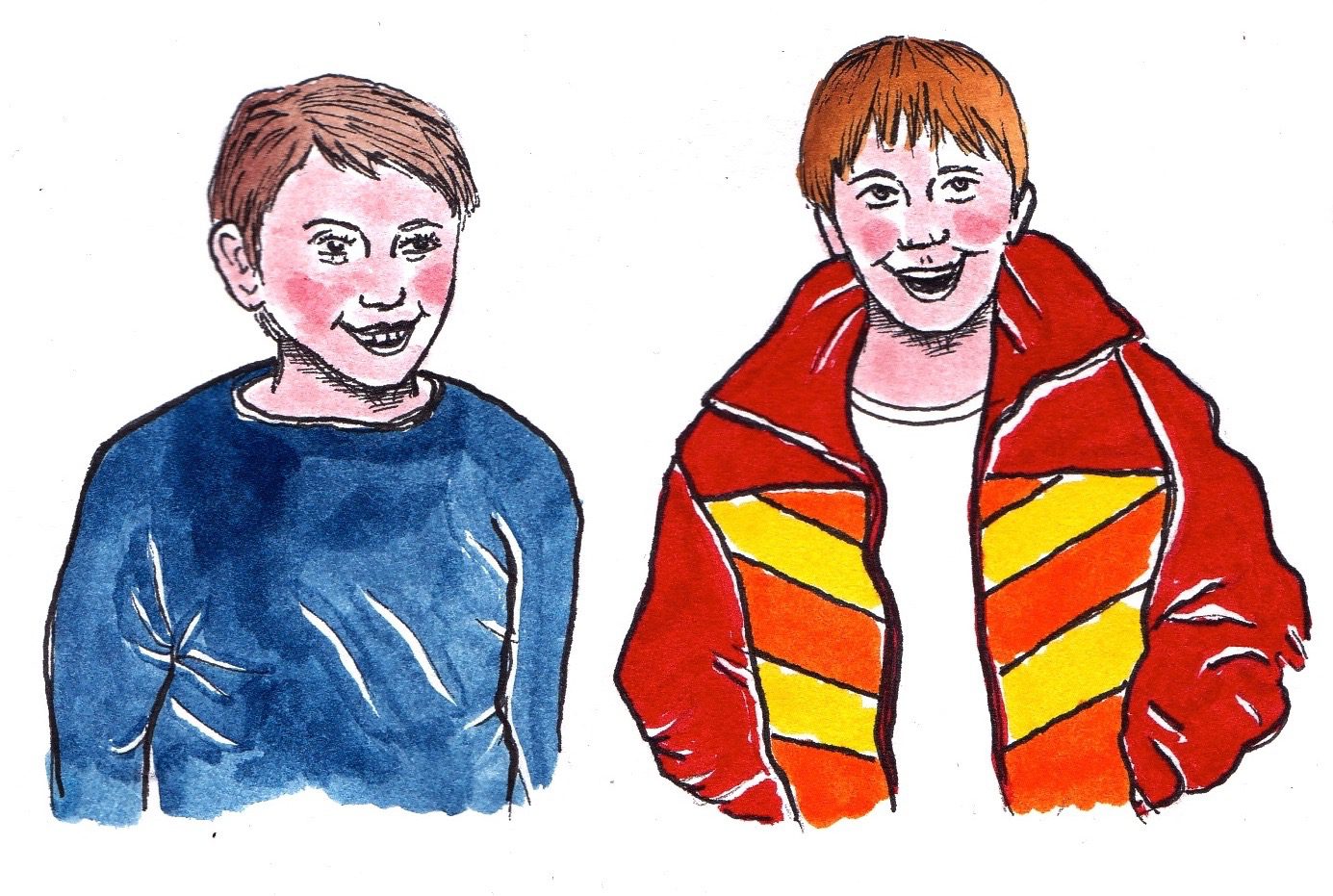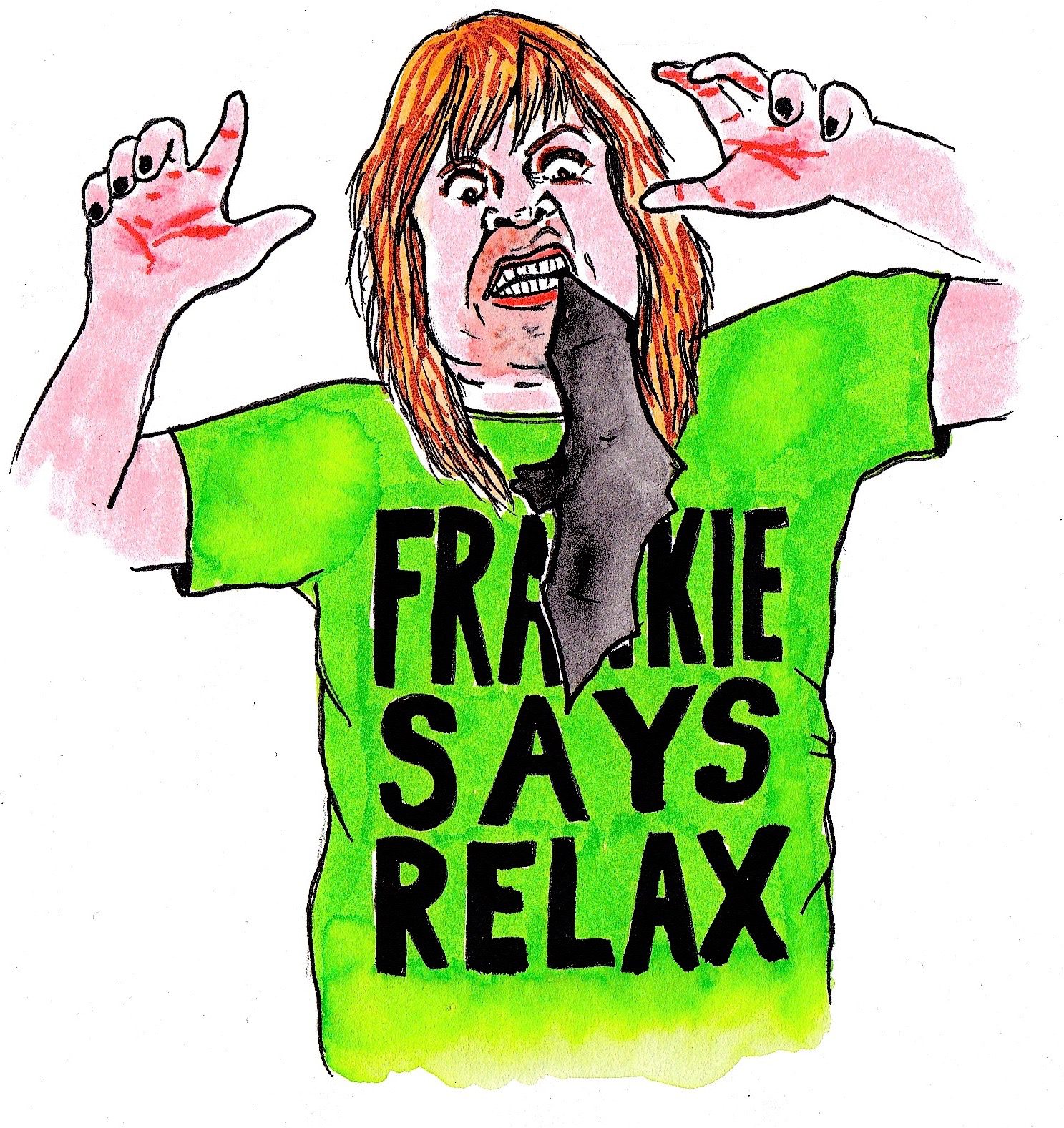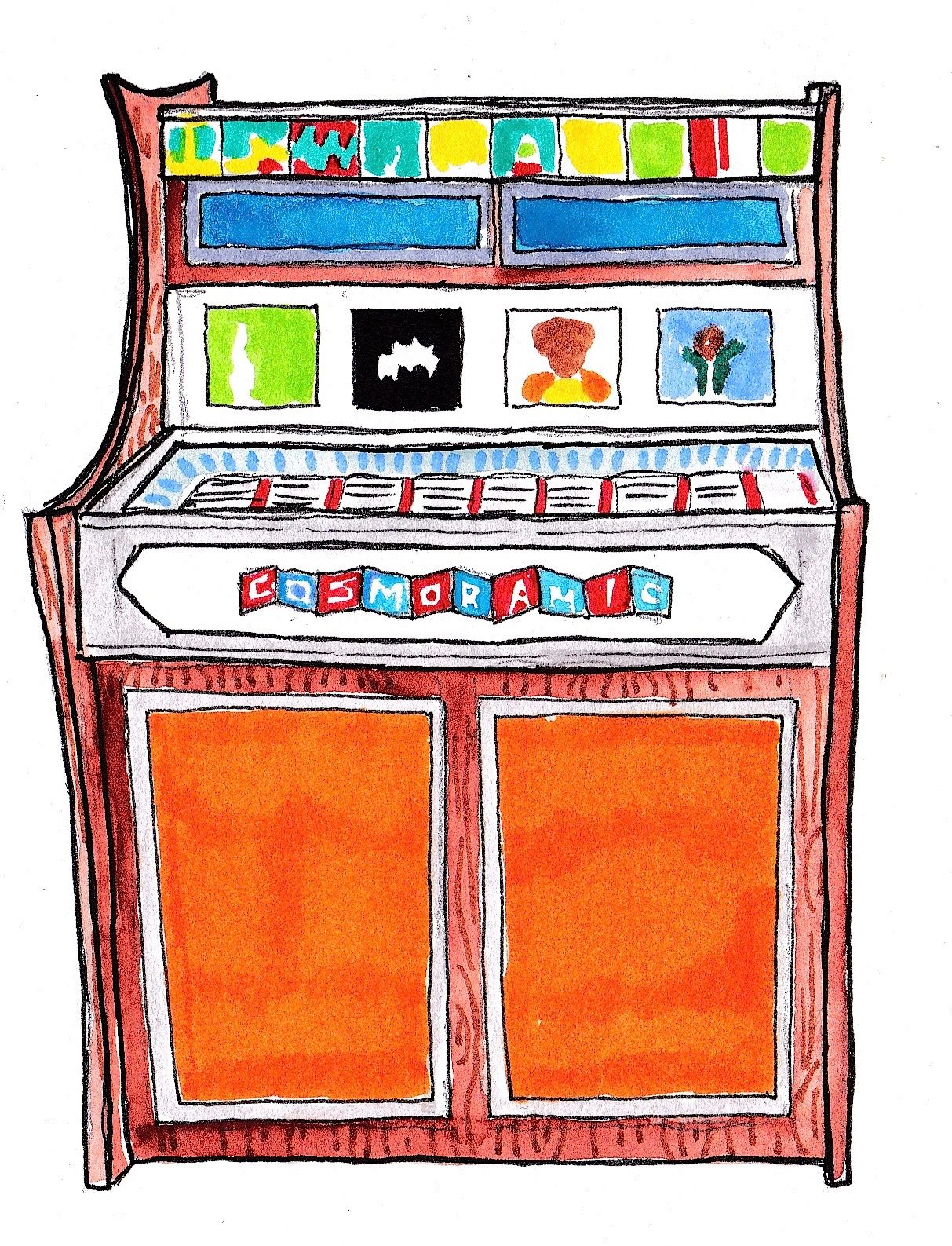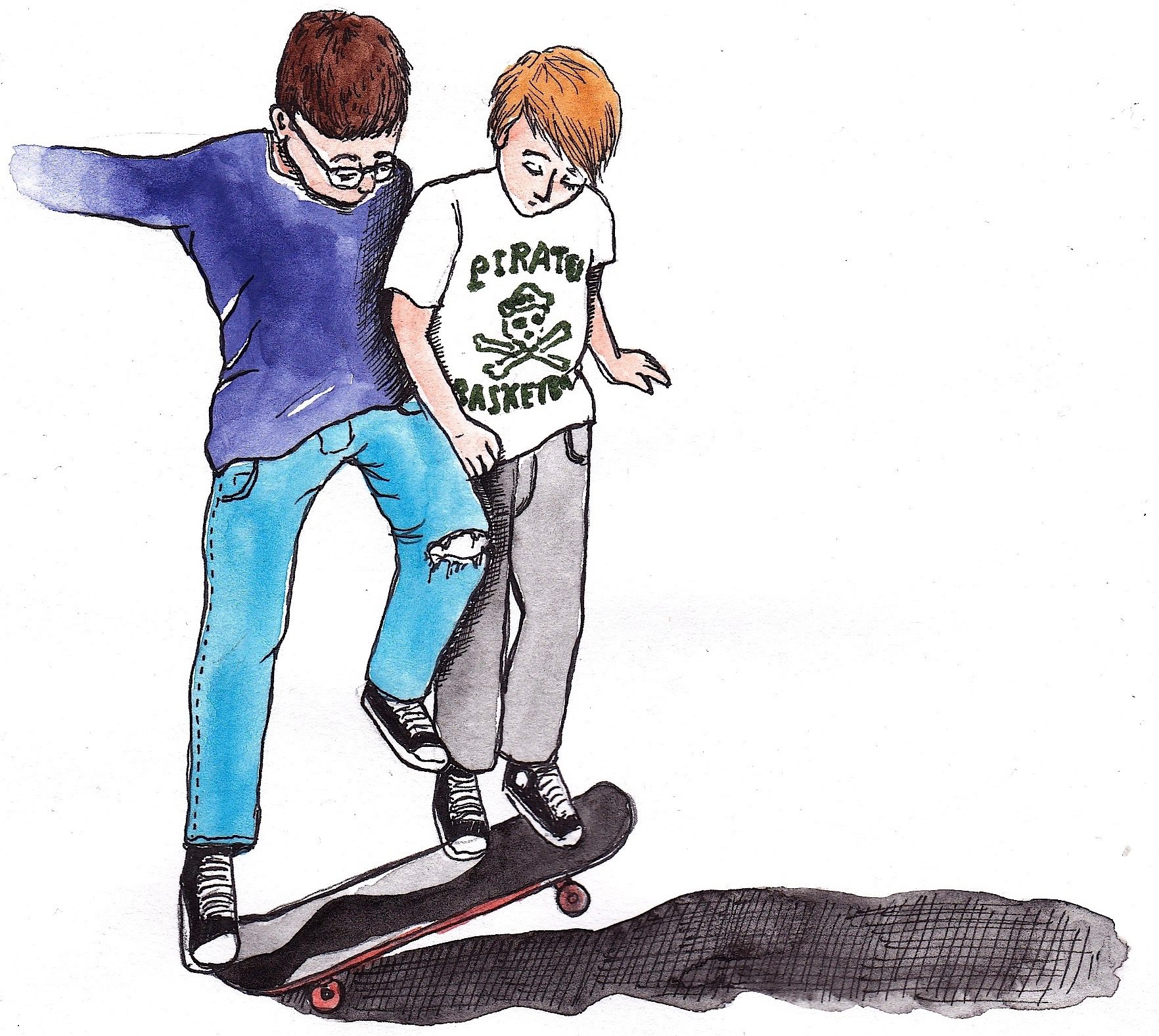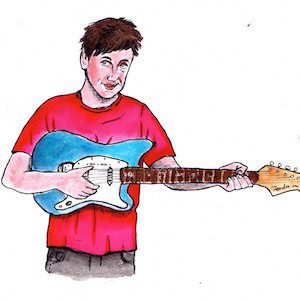
I made a skate zine when I was about twelve. I have moved many, many times and boxed up things for storage either at my place or my mom’s house, but for some reason the zine just keeps showing back up in my life.
Is it a beloved object? No. It’s really embarrassing. At the time I made it I was a below average skater, but I had a little camera and I used to go around and take skate photos. Well, to be more precise, I used to go around and have my friend take fake photos of me doing skate tricks.
In fact I had a whole “how to” section in the zine, a nice three-page spread… but since I couldn’t actually do any of the tricks, I would just map them out and then I’d get my friend to take shots of me, for example, skating toward the trick destination, and then again like five feet later, and then I would stand as if I was about to do the trick, then I’m up in the air—all of this was framed as if a sequence of stop motion shots…
It was all completely staged. Somehow I didn’t quite understand that people in real magazines like Thrasher were really doing the tricks and someone else was taking real photos of them in real time! How did I get to be such a poser?
I grew up in the suburbs of San Francisco in the mid-to-late eighties. There were hills in my neighborhood, of course, and lots of little skate areas. The kids I knew were all skate rats, but I didn’t start until I was about ten or eleven, which is probably why I was so bad at it.
My best buddy Dewey had a Tony Hawk board and I had a Steve Schneer. Schneer was famous for a certain trick, the ho-ho plant, where he would go up on a halfpipe and do a kind of handstand on both hands while the skateboard would remain balanced on his feet. That trick was so good he got a board named for him. It was thinner and lighter than a typical board, which made it cool, but also susceptible to breaking—or at least that’s what I told myself as the reason why I wasn’t doing Steve Schneer-level tricks on it.
My friend Jake was the best in our group. I mean this kid could catch air! But since I couldn’t do anything like that, I guess making the zine was a way for me to stand out. My mom would take us all in her van to skate parks and contests, and eventually I started taking pictures of kids for the zine who were much better than me, kids who were actually doing the tricks.
So the zine started out as fake, but it kind of became more real over time. I’d bring the issues to all the local bicycle and skate shops, any place that was kid oriented, and they would sell them (or give them away for free?) out of a little box next to the cash register.
After a while, I became known as the “camera dude,” which was funny because I had no real interest in photography. What I had was an interest in being part of the scene—not the sporting aspect—but the style, the identity. I wasn’t alone in this. We would all go around wearing Jimmy’z, Dickies, Ben Davis, and Vans. We all wanted to be Tommy Guerrero, who was the coolest dude ever—he seemed so grown up even though in reality he was only a few years older than us.
I feel that especially at that age, like twelve or thirteen, it’s really important to be “in” something. It would change quickly though, like one summer it was all about breakdancing (here’s a video of me doing that), then the next it was suddenly all about new wave music.
Dewey and I started going to all of these concerts. And again, my mom was awesome, so she would drive us to out to Oakland to Kaiser stadium and just wait in the car while we went in alone to see Thompson Twins, Frankie Goes to Hollywood, General Public, The Cure, Tears for Fears, and Howard Jones. And then as soon as that was over, we got deep into metal.
All of my friends chose their own metal heroes. As I recall, for Matt it was Iron Maiden. For Jake it was Def Leppard. For Dewey it was Mötley Crüe. My hero was Ozzy Osbourne. Oh, man! I wanted to go to Ozzy’s concert so bad, but my parents drew the line because he had just been rumored to have bitten the head off a bat…
My friends and I started playing music around that time. Our band didn’t have a name but we’d just hang around playing Rush covers and stuff—but really dumbed down since we couldn’t really play. And our practice space was a basement with a dirt floor, so we could only play one song at a time because the debris from the drums would be flying everywhere and we’d have to go outside for like twenty minutes between songs to cough it up. So it was play a song, then go outside, then skate, and then go back in, and then play another.
I got more serious about music later, but it wasn’t until I was about twenty-six or twenty-seven that I started recording and giving my tapes to other people to listen to my songs. Cheap four-track tapes eventually became CDs, which I could give out after a show, and so on. My album This Is My Story, This Is My Song—which probably something like only twelve people have—was the first time I made something and was able to look back at it and say, “Oh, that wasn’t horrible.”
You know, a lot of this stuff from my youth is coming back now, not just zines but also stuff like vinyl, etc. I’m not sure it’s just that people want material objects, but that they want something collectible. You’ll notice that vinyl is now often like limited edition prints. Maybe the first hundred are pink, and then the next three hundred are black, and the next batch are another color entirely. Same with a cassette tapes, they’ll often be numbered now, one of X.
Remember that era, sort of in between CDs and when vinyl started coming back where people were making really exquisite, often hand-assembled, CD packaging? Some of these were cool, but honestly others were painfully pretentious, like made out of macramé or something.
Old zines like the one I made weren’t fancy. You made them up on a Xerox machine with regular copy paper, in small batches of forty or something—not because you were trying to make them rare, but because there was no collector’s market, no one was trying to hoard them, not too many people even read them. I think my mom only saved mine because she saves everything, and I’ve only recently reclaimed it because her attic was getting too full.
Years after making that zine I’ve gone on to work on lots of other projects that play with the distinction between real and fake but I’m never trying to manufacture memorabilia. For example, for my 100 Records project, I invited artists to make album cover artwork for fictitious bands. I then wrote and recorded the songs for each of these albums. I also handmade a jukebox that played the actual recordings, but the records weren’t pressed on vinyl. The jukebox was made out of wood and Plexiglas with handmade title cards, but its innards were digital.
I didn’t present the jukebox as a real jukebox playing real records by real bands—though some of the fake bands whose music was in the jukebox were made up of real musicians, and some of them got real record deals out of the project.
Creatively this was one of the most freeing projects I’ve ever done. Not every one of the hundred songs needed to be a masterpiece meant to live on forever. And fictional characters performed the songs, so if say The Beach Ticks don’t know how to record it was okay to include a recording of a song where the tape melted in production. I wouldn’t put that out on a proper Sonny & the Sunsets record, but because of the artistic context it made sense here.
In Sonny & the Sunsets’s music, a lot of the songs I write are character-based, and they’re sometimes based on real people. For example, I have a friend who manages a health food store. When we made our last album, I sent him an email and said, “Tell me some shit about your employees” and I took his reply almost verbatim for the song lyrics to “Happy Carrot Health Food Store.” You know, at first I said, “Larry, I don’t know if I should do this.” But he said, “Don’t worry, they’ve all been fired or they quit.”
Another song from the album, “Talent Night at the Ashram,” was based on a friend telling me about her experiences living at an ashram—She was like, “Yeah, there was this guy Terry who had electric blue eyes. He sang Leonard Cohen songs…” Lyrics!
And I know that when I perform my music, I’m also creating a kind of temporary illusion. The me who will be on the stage hours from now corresponds to the me who is sitting across from you at this table and talking to you now… if all goes well. But if you stick around for the show you’re going to see a slightly different Sonny Smith, a musician playing music at Baby’s All Right in Brooklyn, not regular everyday guy Sonny Smith, and not twelve-year-old Sonny Smith the skate zine maker.
It’s funny. My son is now about the same age as I was when I first started skating, and I’m really happy that at least for the time being he seems to enjoying it without being worried about what it means. In one way or another we all tell stories to ourselves about who we are. Looking back at that zine now is kind of humbling for me. It reminds me that it’s okay to want to imagine yourself someplace that’s always in between where you’ve been and a future that’s by definition unknowable.
***
Wanted/Needed/Loved: Musicians and the Stuff They Can’t Live Without is an illustrated column where musicians share the stories behind meaningful objects. As told to Allyson McCabe and illustrated by Esme Blegvad.
***
Sonny Smith is a San Francisco-based musician, playwright, and multimedia artist. Through his travels as a blues piano player in Colorado, California, and Central America, Smith developed a unique narrative songwriting style, releasing his debut album Who’s the Monster…You or Me? in 2000. As Smith continued recording as a solo artist, the Headlands Center for the Arts awarded him a residency to create the musical The Dangerous Stranger, and he was commissioned by Watchword literary magazine to record an album of one-act plays performed as songs by guest artists including Neko Case and Miranda July. In 2007, Smith formed the collective band Sonny & the Sunsets, which released its full-length debut Tomorrow Is Alright in 2010. That same year, the band also participated in Smith’s “100 Records” show in San Francisco, where 100 artists created record jackets by fictional bands for a series of 7″s featuring music created by Smith. Sonny & the Sunsets’s most recent album, Talent Night at the Ashram, was released earlier this year, and the band is currently on tour.

